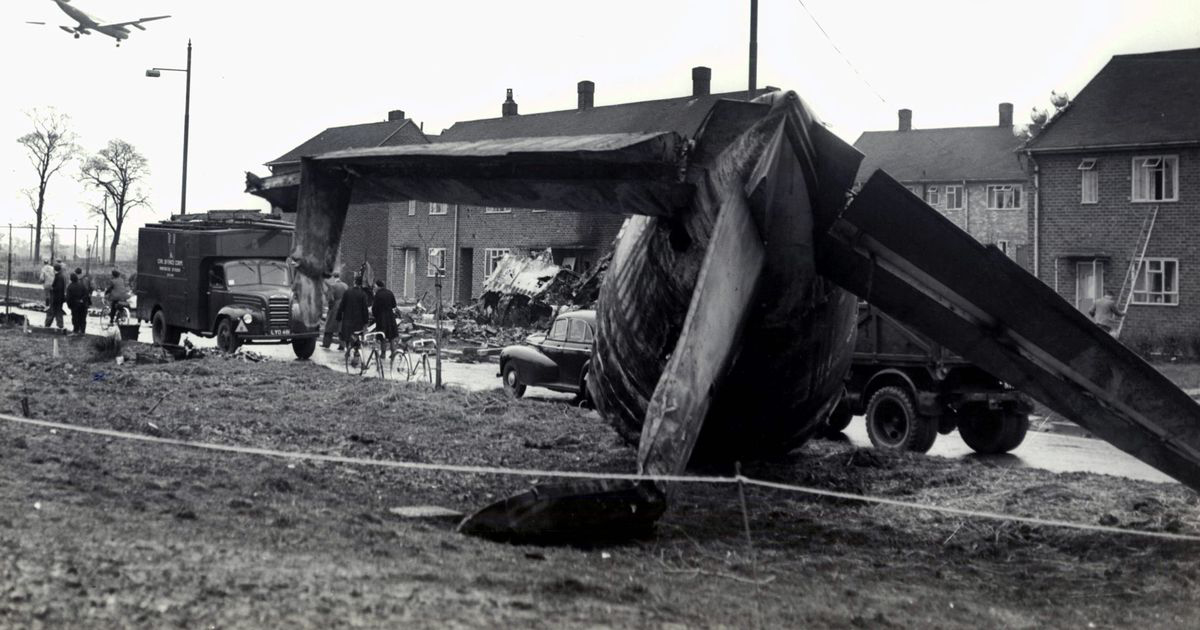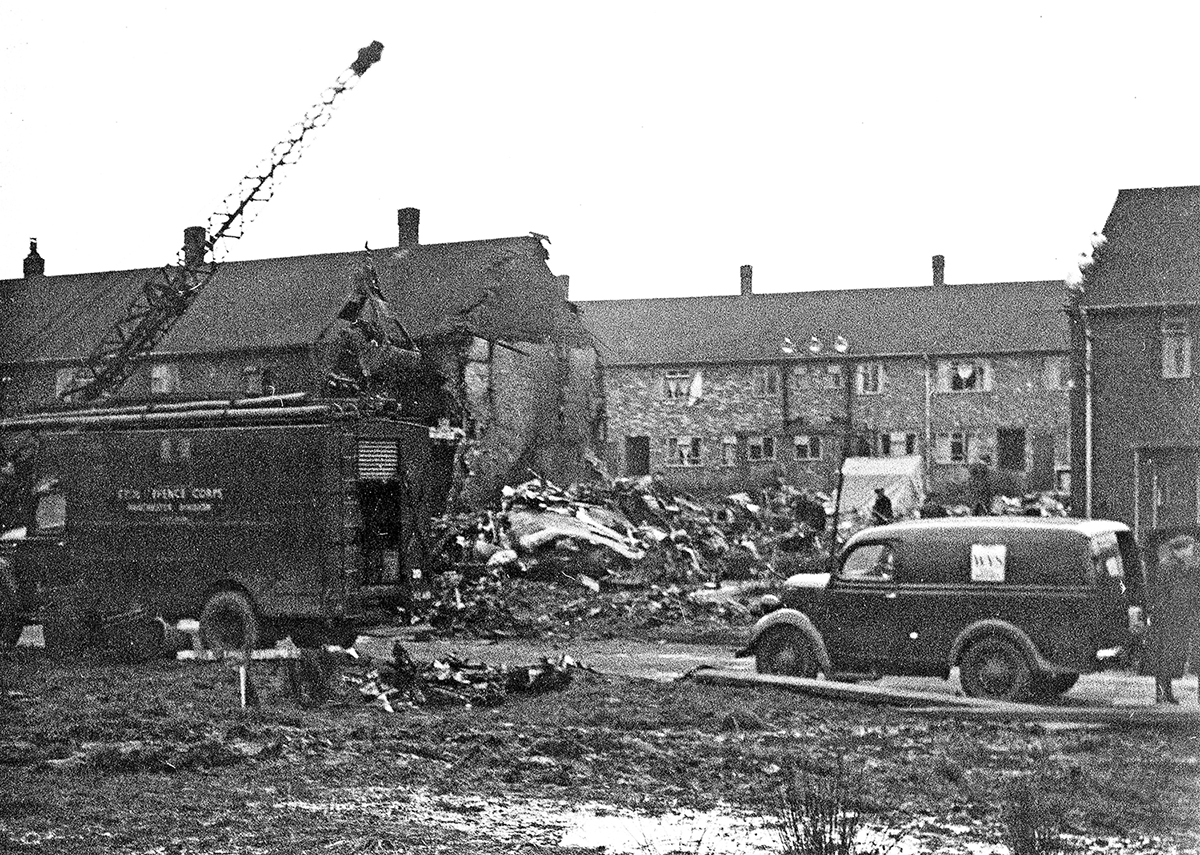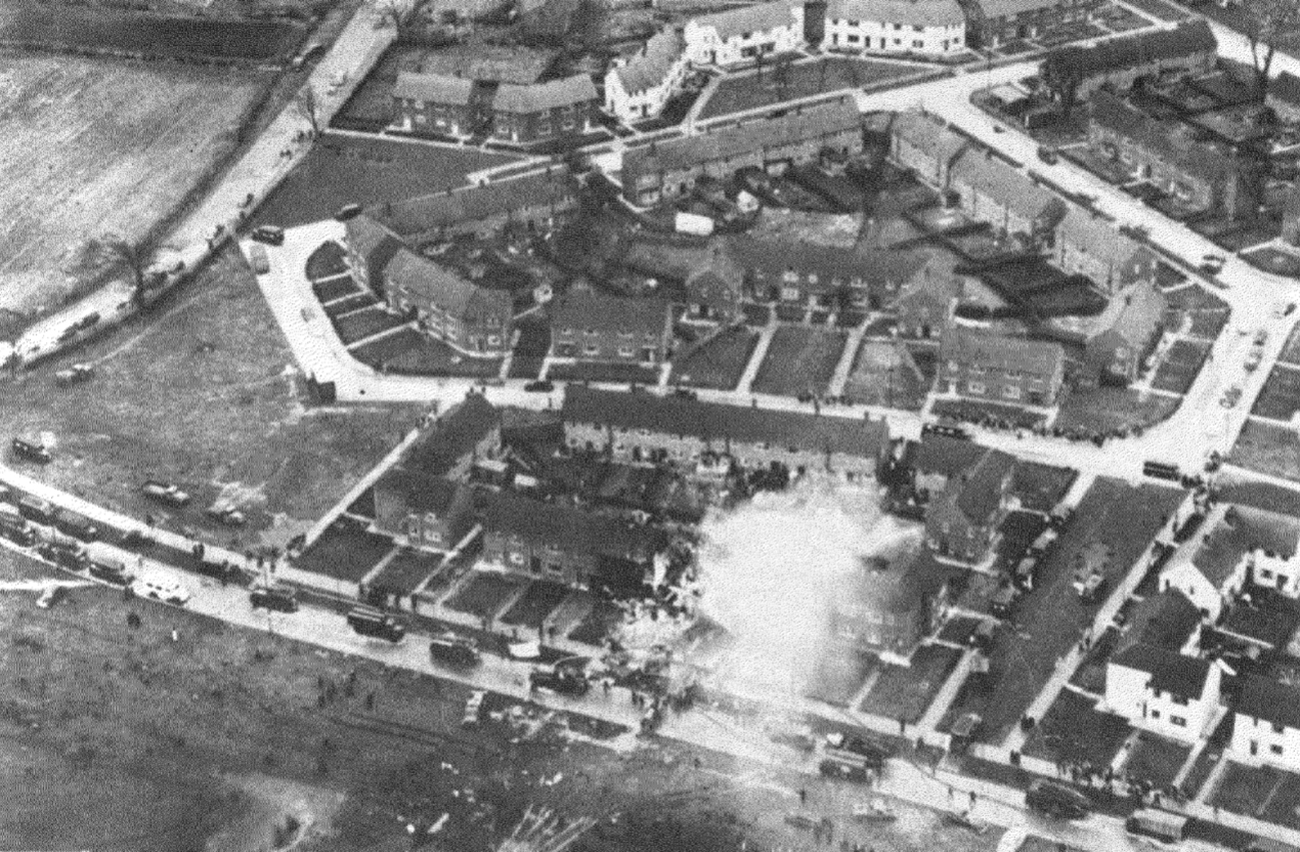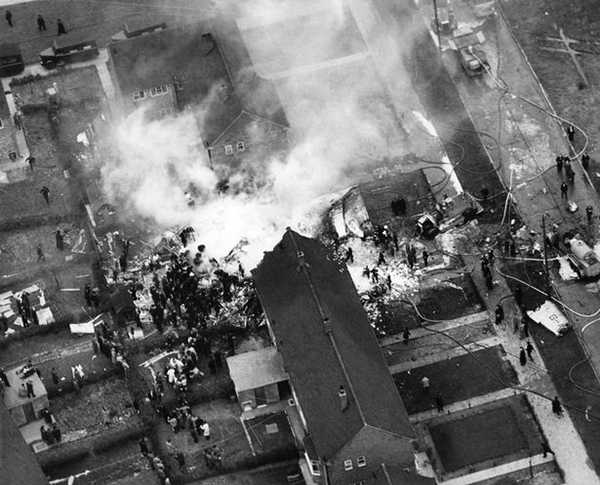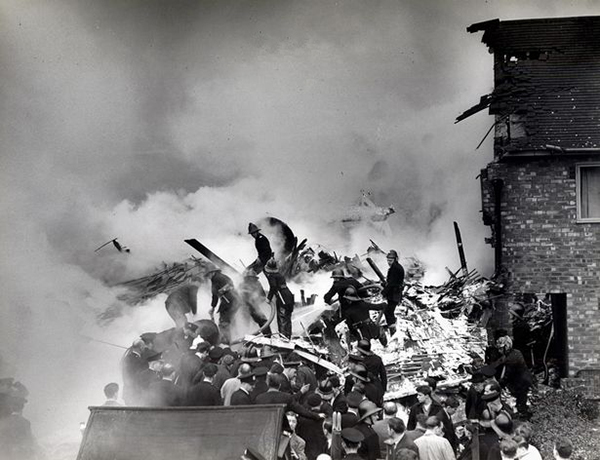Country
code
Great Manchester
Crash of a Max Holste M.H. 1521M Broussard in Barton
Date & Time:
Jun 7, 1988 at 1730 LT
Registration:
G-BKPU
Survivors:
Yes
Schedule:
Liverpool - Barton
MSN:
217
YOM:
1959
Crew on board:
2
Crew fatalities:
Pax on board:
0
Pax fatalities:
Other fatalities:
Total fatalities:
0
Captain / Total hours on type:
33.00
Circumstances:
The purpose of the flight was to familiarise a prospective purchaser with the handling of the aircraft. The captain who was the owner of the aircraft and held a Private Pilot's Licence with an Instructor's Rating, occupied the right-hand seat and the other pilot, who also held a Private Pilot's Licence, occupied the left-hand seat. The weather was fine with a light north-easterly wind. Before takeoff, some oil was noticed on the windscreen but neither the pilot considered that it warranted any action. Following an uneventful takeoff during which the engine and propeller functioned normally, some minutes were spent in the local area before it was decided to visit Barton. Liverpool ATC was informed and G-PU set course to Barton. On approaching Barton, some 20 minutes into the flight, an adjustment to the engine controls resulted in a significant increase in the amount of oil on the windscreen. The captain was unconcerned but the pilot kin the left-hand seat thought that he might have problems with visibility for landing. Shortly after this, Barton radio passed the airfield information which gave the landing runway as 09 with a left hand circuit. When crosswind at a height estimated by ground observers to be about 500 feet agl, the captain selected the propeller control to fully fine as part of his pre-landing checks. Coincident with this action, the windscreen and side windows became covered with a large quantity of oil which totally obscured both pilots view of the outside world. The operation manual recommends that under these circumstances the propeller be selected to coarse pitch to reduce the flow of oil. The captain did not execute this procedure because he considered that configuring the aircraft for an immediate landing in fine pitch was his priority in the prevailing circumstances. Both pilots opened their direct vision panels which enabled them to see the ground abeam the aircraft but not forward vision was possible because of the large amount of smoke that was ny now streaming back from the engine. The presence of smoke led the crew to believe that the aircraft might be on fire. Since the pilot in the left-hand seat could see towards the runway, it was decided that he should retain control and attempt to position the aircraft for a landing on runway 09. The captain made a radio call requesting priority in the circuit but the radio operator in the control tower received only carrier wave and assumed the call to be the captain's downwind report and replied accordingly. The aircraft's permanent radios not functioning and a hand held transceiver was being used by the pilot. Previous radio communications had been satisfactory. When it was judged that G-PU was at the end of the downwind leg, a turn onto base leg was initiated and a descent commenced. After turning towards the estimated position of the runway 09 threshold, the captain realised that he was high and selected full flap. It then became apparent to him that not only was the aircraft too high but that it had also flown through the runway centerline and he judged that, because of the presence of houses in the over-run are of runway 09, a safe landing could not be made. He therefore elected to go-around and increased power. The engine responded normally but the aircraft failed to either climb or accelerate. G-PU was now at a height estimated to be between 200 and 300 feet agl and the captain decided to retain full flap for a further circuit. During the subsequent left turn and downwind leg the aircraft as observed to be steadily losing height and the radio operator in the control tower alerted the emergency services in anticipation of a crash. G-PU continued its turn towards the airfield at a very low altitude but the crew did not have enough visual reference to determine their position. When it became apparent to the handling pilot that he was very close to the ground, he leveled the wings and waited for the inevitable impact. G-PU struck a stand of small trees and on the top of the M62 motorway embankment while on a heading of 180°, it then struck a motorway sign and several vehicles before coming to rest on the hard shoulder on a westerly heading. Neither pilot was aware that they had landed on the motorway until they vacated the aircraft. Neither pilot was injured but a car passenger sustained serious injuries.
Probable cause:
The most probable sequence, therefore, leading to the anomalies found in the propeller hub is, firstly, the break-up of the outboard leather seal, secondly the displacement of the inboard gasket by oil pressure following the loss of clamping loads and, coincident with the disruption of the gaskets, the damaging and ejection of the phenolic bush. The rest of the propeller pitch change system was examined for anything which could have caused excessive or asymmetric loading on the actuating cylinder but none was found.
Final Report:
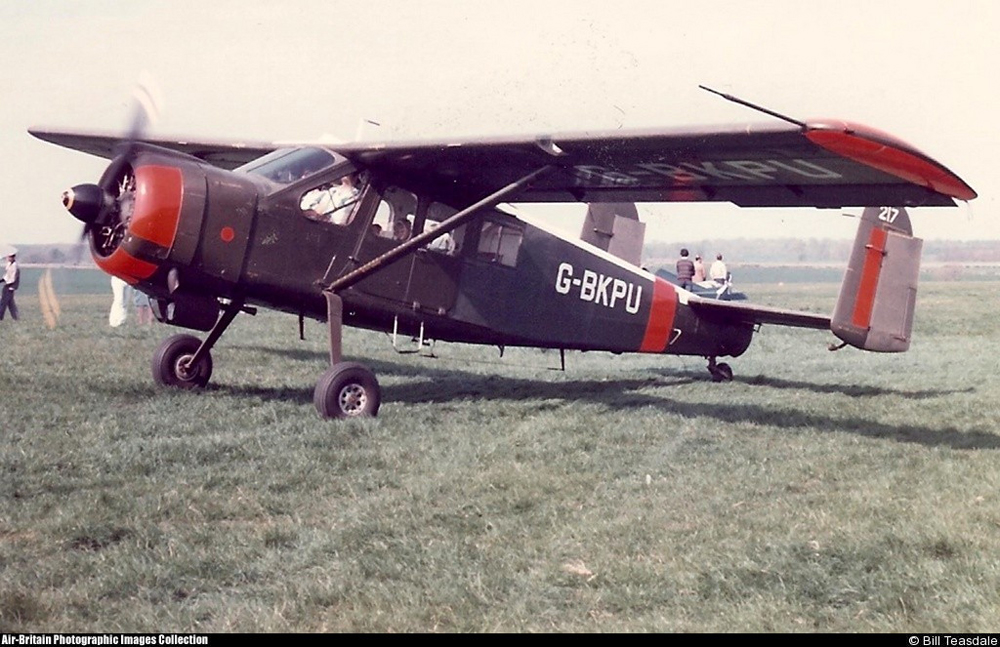
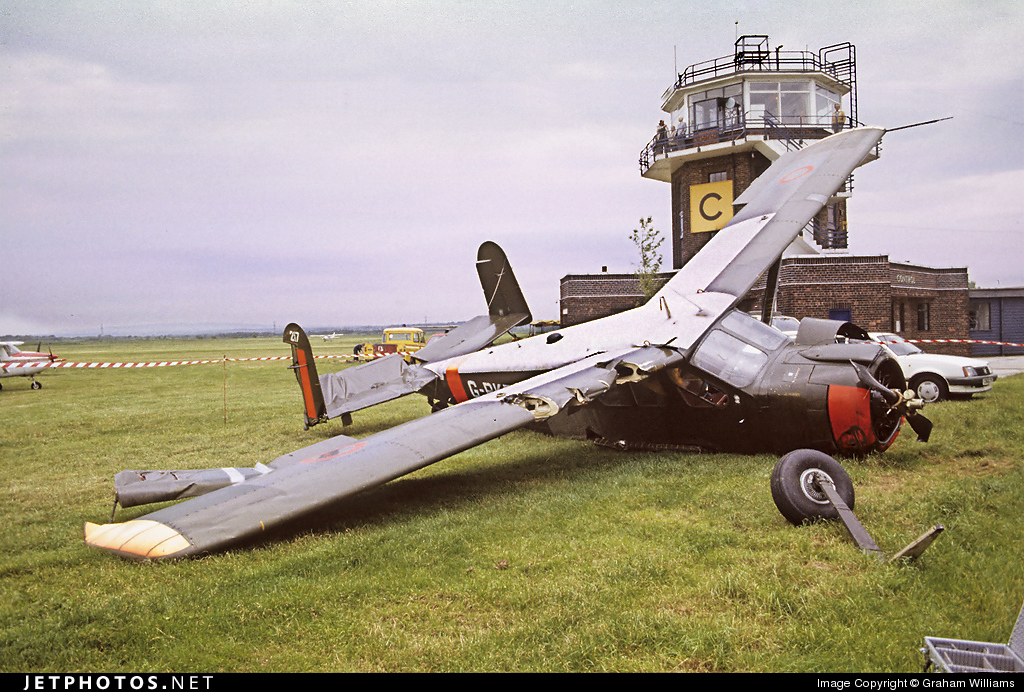


Crash of a Boeing 737-236 in Manchester: 55 killed
Date & Time:
Aug 22, 1985 at 0713 LT
Registration:
G-BGJL
Survivors:
Yes
Schedule:
Manchester - Kerkyra
MSN:
22033
YOM:
1981
Flight number:
KT328M
Crew on board:
6
Crew fatalities:
Pax on board:
131
Pax fatalities:
Other fatalities:
Total fatalities:
55
Captain / Total hours on type:
1276.00
Copilot / Total hours on type:
345
Aircraft flight hours:
12977
Aircraft flight cycles:
5907
Circumstances:
British Airtours Flight 328 (also known as flight 28M) was a charter flight from Manchester to Corfu. At 06:08 in the morning the crew were cleared to taxi to runway 24 for departure. At 06:12 the aircraft had lined up on the runway and was cleared for takeoff. The takeoff was to be performed by the co-pilot. During the takeoff run the captain made the routine 'eighty knots' call and 12 seconds later a 'thump' or 'thud' was heard. The captain immediately ordered 'stop', closed the throttles an selected reverse thrust. The maximum speed achieved was 126 knots IAS. At first the captain thought they had suffered a tyre burst or a bird strike. The co-pilot had applied maximum wheel braking, however, because of the possible tyre burst, the captain said 'Don't hammer the brakes, don't hammer the brakes'. At 45 seconds after the start of the takeoff run, 9 seconds after the 'thud', as the aircraft decelerated trough 85 knots the captain radioed ATC that they were abandoning takeoff. The fire bell rang simultaneously and he added as he cancelled reverse thrust, 'it looks as though we've got a fire on number 1'. ATC confirmed this: 'right there's a lot of fire, they're on their way now.'. At 25 seconds past the 'thud' (and 20 seconds before the aircraft stopped) the crew decided to evacuate via the starboard side. The 737 was decelerating through 36 knots then and the captain warned the cabin crew about the evacuation six seconds later. After the aircraft stopped a no. 1 engine fire drill was carried out, the no. 2 engine was shut down and the passenger evacuation drill carried out. Before completion of this drill the captain saw fuel and fire spreading forward on the left side of the aircraft. Both flight crew members escaped through the sliding window in the right hand side. Immediately after the 'thud' an intense fire developed on the left-hand side of the plane, causing some cracking and melting of windows with some associated smoke in the aft cabin. This caused some passengers to stand up in alarm and move into the aisle. Immediately after coming to a halt the purser tried to open the right front door (R1) but the escape slide container jammed on the doorframe, preventing further movement of the door. He then crossed to the L1 door and opened it (25 seconds had passed since the aircraft had stopped). The purser then returned to the R1 door and managed to clear the obstruction and was able to open the door 85 seconds after the aircraft had stopped. Meanwhile passengers had managed to open the right hand overwing exit. The R2 (right rear) door had also been opened but no one escaped through this exit. In total 17 surviving passengers escaped through the L1 door, 34 through R1 and 27 through the overwing exit.
Probable cause:
The cause of the accident was an uncontained failure of the left engine, initiated by a failure of the No 9 combustor can which had been the subject of a repair. A section of the combustor can, which was ejected forcibly from the engine, struck and fractured an underwing fuel tank access panel. The fire which resulted developed catastrophically, primarily because of adverse orientation of the parked aircraft relative to the wind, even though the wind was light. Major contributory factors were the vulnerability of the wing tank access panels to impact, a lack of any effective provision for fighting major fires inside the aircraft cabin, the vulnerability of the aircraft hull to external fire and the extremely toxic nature of the emissions from the burning interior materials. The major cause of the fatalities was rapid incapacitation due to the inhalation of the dense toxic/irritant smoke atmosphere within the cabin, aggravated by evacuation delays caused by a forward right door malfunction and restricted access to the exits.
Final Report:
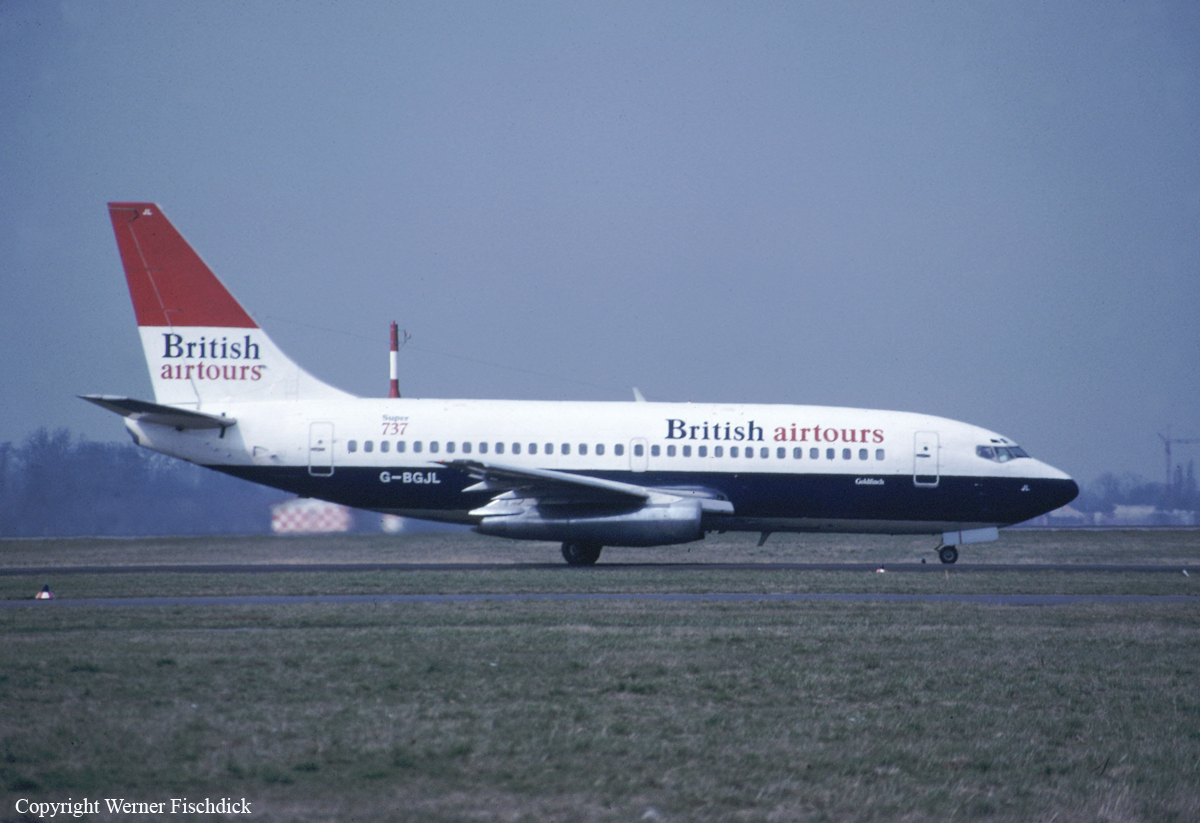

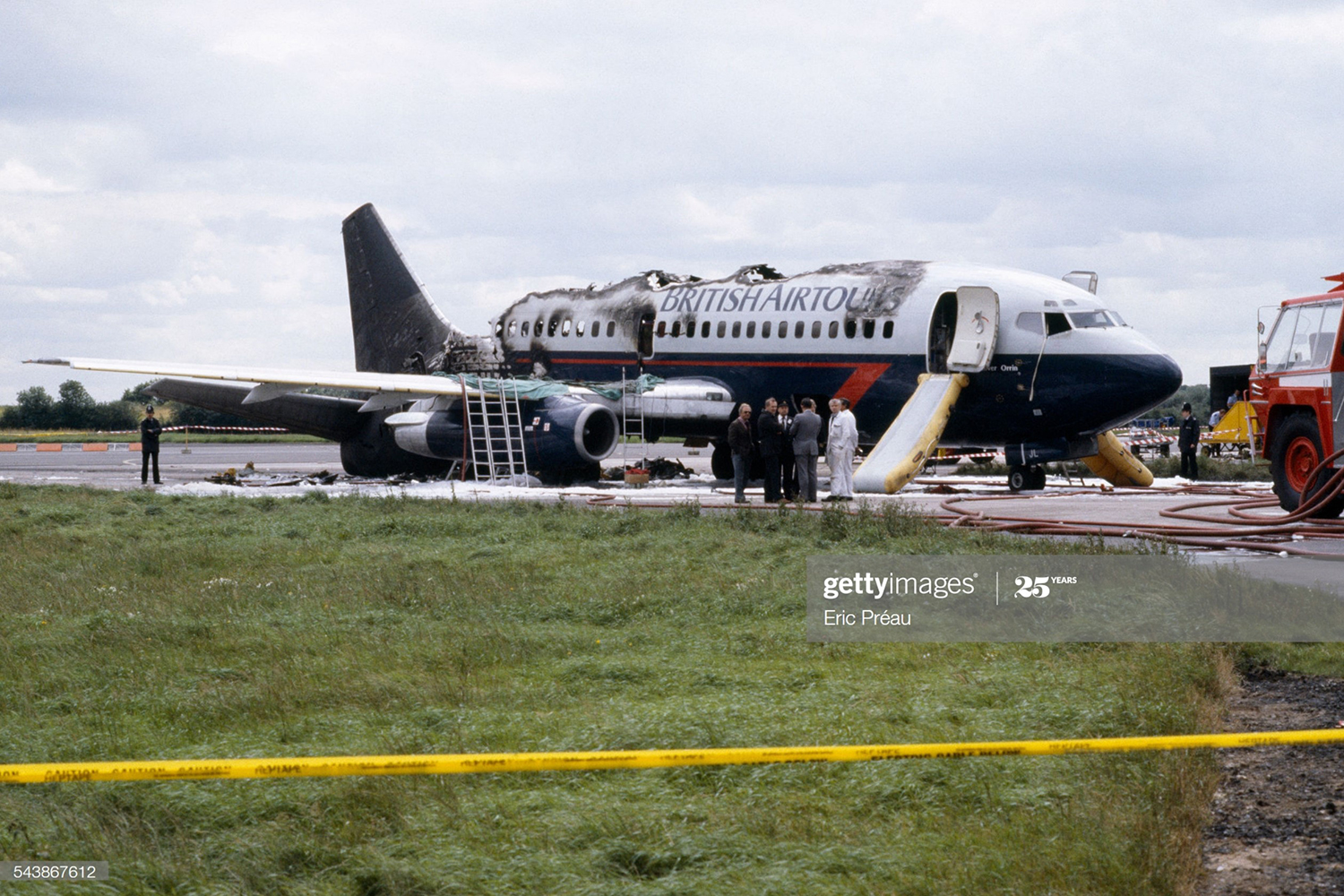
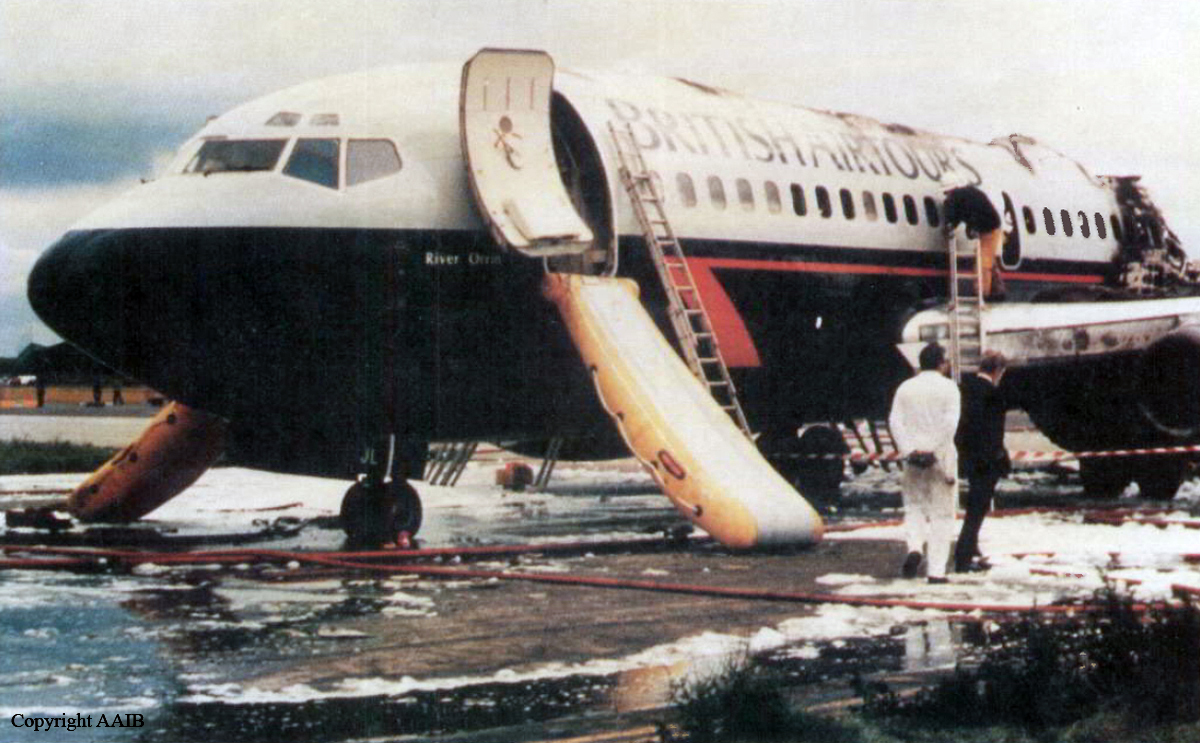

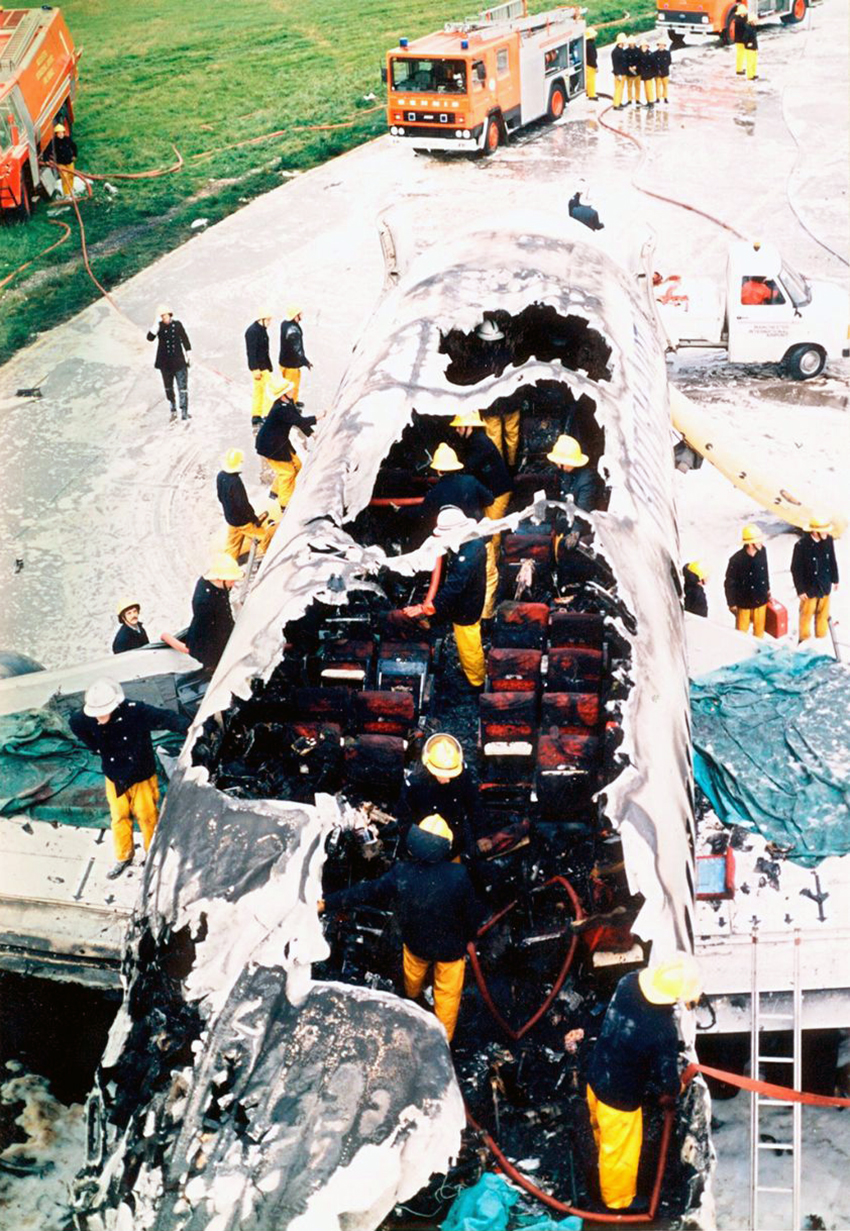
Crash of a Vickers 815 Viscount in Manchester: 3 killed
Date & Time:
Mar 20, 1969
Registration:
G-AVJA
Survivors:
Yes
Schedule:
Manchester - Edinburgh
MSN:
336
YOM:
1959
Crew on board:
4
Crew fatalities:
Pax on board:
0
Pax fatalities:
Other fatalities:
Total fatalities:
3
Circumstances:
The crew (two pilots and two flight attendants) was completing a positioning flight to Edinburgh-Turnhouse Airport. Both pilots took the opportunity to make some training and decided to simulate an engine failure at takeoff. Shortly after liftoff at Manchester-Ringway Airport, while in initial climb, the crew shut down the engine n°4 and feathered its propeller when the airplane started to yaw sharply to starboard. Control was lost then the aircraft crashed inverted and burst into flames. A flight attendant was injured while three other occupants were killed.
Crew:
I. Wallace, pilot, †
R. A. Weeks, copilot, †
S. Wallis, stewardess, †
Jane Timson, stewardess.
Crew:
I. Wallace, pilot, †
R. A. Weeks, copilot, †
S. Wallis, stewardess, †
Jane Timson, stewardess.


Crash of a Canadair C-4 Argonaut in Manchester: 72 killed
Date & Time:
Jun 4, 1967 at 0909 LT
Registration:
G-ALHG
Survivors:
Yes
Schedule:
Palma de Majorca - Manchester
MSN:
153
YOM:
1949
Crew on board:
5
Crew fatalities:
Pax on board:
79
Pax fatalities:
Other fatalities:
Total fatalities:
72
Captain / Total hours on type:
2009.00
Copilot / Total hours on type:
136
Circumstances:
The aircraft was on a non-scheduled international flight from Manchester to Palma and return. It landed at Palma at 0220 hours GMT, was refuelled and took off for Manchester at 0406 hours GMT. The co-pilot was flying the aircraft from the right-hand seat and the flight was uneventful - between 0856 hours and 0900 hours the aircraft was descending for approach and landing and was being vectored towards the ILS localizer. At 0901:30 hours the flight was informed that it was 9 miles from touchdown and well left of the centre line and it was asked if it was receiving the ILS. The pilot-in-command replied that he was and would turn right a little. Shortly thereafter one engine, most probably No. 4, ceased to deliver power, followed some 15 seconds later by the other engine on the same side. The pilot-in-command took over the controls and just after 0903 hours the Controller told the flight that it was 6 miles from touchdown and asked if it was established on the ILS localizer. This message was not acknowledged by the flight and 7 seconds later the Controller asked if it was still receiving. The pilot-in-command then replied "Hotel Golf is overshooting, we've got a little bit of trouble with rpm". The aircraft's indicated air speed was then only 116 kt and its height 1 838 ft AMSL. The Controller then ordered the pilot-in-command to turn left on to 160'~ and climb to 2 500 ft QNH. He then asked the reason for overshooting and was told "We've a little bit of trouble with rpm, will advise you". At 0903:51 hours the pilot-in-command asked what the left turn was on to. The Controller noted that the aircraft had already turned through 25' to the right instead of to the left, so he ordered the pilot to continue turning right on to 020' and climb to 2 500 ft on QNH. This was acknowledged by the co-pilot. At 0904:41 hours the Controller asked the flight to advise when ready to recommence the approach. By this time the aircraft's IAS had dropped to 111 kt, its height to 1 287 ft ONH, and it had broken cloud and was seen by an eyewitness. Thereafter it flew below cloud in conditions of reasonable visibility. At 0905:26 hours the Controller told the flight that it was 7 miles from the airfield on a bearing of 040' and requested its height. The flight reported at 1 000 ft. This was the first indication to the Controller that the aircraft was faced with an emergency and after checking that the height given was correct he put full emergency procedure into operation at the airfield and ordered the aircraft to turn right on to 180 M, so that it would close the ILS localizer. At 0905:47 hoursthe Controller asked the flight if it could maintain height. The pilot-in-command now at 981 ft AMSL and only some 800 ft above the ground replied "just about". He was told he was 8 miles from touchdown and should continue his right turn on to 200% and maintain as much height as possible. At this point 341 ft of height were lost in 10 seconds after the IAS had fallen to 100 kt and the pilot-in-command said he was not able to maintain height at the moment. The Controller told him that he was 8 miles from touchdown and closing the ILS localizer from the right. At 0907:09 hours, the Controller informed the flight that radar contact had been lost due to the aircraft's low height and asked the pilot to adjust his heading on the ILS and report when established. The co-pilot replied that they had "the lights to our right'' and were at 800 ft, just maintaining height, and the pilot-in- command asked for the emergency to be laid on. At 0907:35 hours the pilot-in-command requested his position and was told 7; miles to run to touchdown. Half a minute later the Controller repeated that he had no radar contact, and cleared the flight for landing, the surface wind being 270°/12 kt. At this stage the PAR Controller, who had overheard that the Approach Controller had lost radar contact, saw a contact at the bottom of his elevation display, and told the flight that it was 6 miles from touchdown. The co-pilot then gave their altitude as being 500 ft. The terrain clearance was only 300 ft and the IAS was below 105 kt and falling. The aircraft was approximately on the line of the ILS localizer and heading for the very centre of the built up area of Stockport. A few seconds after 0909 hours the aircraft struck the ground more or less level in pitch, slightly right wing down, and slightly yawed to the right. From the evidence of two eyewitnesses who saw the aircraft just before the crash it was clear the pilot-in-command deliberately cut the power very shortly before impact and deliberately put the aircraft down on what was the only pocket handkerchief of relatively open space available, immediately before tall blocks of flats, the town hall, the police station, and Stockport Infirmary. Three crew members and 69 passengers were killed while 12 other occupants were injured.
Probable cause:
The immediate cause of the accident was loss of power of both engines on the starboard side resulting in control problems which prevented the pilot from maintaining height on the available power with one propeller windmilling. The loss of power of the first engine was due to fuel starvation due to inadvertent fuel transfer in flight. The loss of power of the second engine was due either to fuel starvation resulting from inadvertent fuel transfer in flight or to misidentification by the crew of which engine had failed followed by failure to restore power in time to the engine misidentified as having failed. Contributory causes of the accident were:
- The design of the fuel valves and location in the cockpit of their actuating levers, so that a failure by the pilot correctly to position the lever by an amount so small as to be easy to do and difficult to recognize would result in inadvertent fuel transfer on a scale sufficient to involve the risk after a long flight of a tank expected to contain sufficient fuel being in fact empty,
- Failure of those responsible for the design of the fuel system or the fuel valves to warn users that failure by a small amount to place the actuating levers in the proper position would result in inadvertent fuel transfer on a scale involving this risk after a long flight,
- Failure of British Midland's air crew or engineers to recognize the possibility of inadvertent fuel transfer in the air from the evidence available in previous incidents in flight and contained in the fuel logs,
- Failure of other operators of Argonauts who had learned by experience of the possibility of inadvertent fuel transfer in flight to inform the Air Registration Board, the Directorate of Flight Safety of the Board of Trade or its predecessors, or the United Kingdom Flight Safety Committee of the facts which they had learned so that these might be communicated to other operators of Argonauts and other aircraft equipped with similar systems and fuel cocks.
- The design of the fuel valves and location in the cockpit of their actuating levers, so that a failure by the pilot correctly to position the lever by an amount so small as to be easy to do and difficult to recognize would result in inadvertent fuel transfer on a scale sufficient to involve the risk after a long flight of a tank expected to contain sufficient fuel being in fact empty,
- Failure of those responsible for the design of the fuel system or the fuel valves to warn users that failure by a small amount to place the actuating levers in the proper position would result in inadvertent fuel transfer on a scale involving this risk after a long flight,
- Failure of British Midland's air crew or engineers to recognize the possibility of inadvertent fuel transfer in the air from the evidence available in previous incidents in flight and contained in the fuel logs,
- Failure of other operators of Argonauts who had learned by experience of the possibility of inadvertent fuel transfer in flight to inform the Air Registration Board, the Directorate of Flight Safety of the Board of Trade or its predecessors, or the United Kingdom Flight Safety Committee of the facts which they had learned so that these might be communicated to other operators of Argonauts and other aircraft equipped with similar systems and fuel cocks.
Final Report:

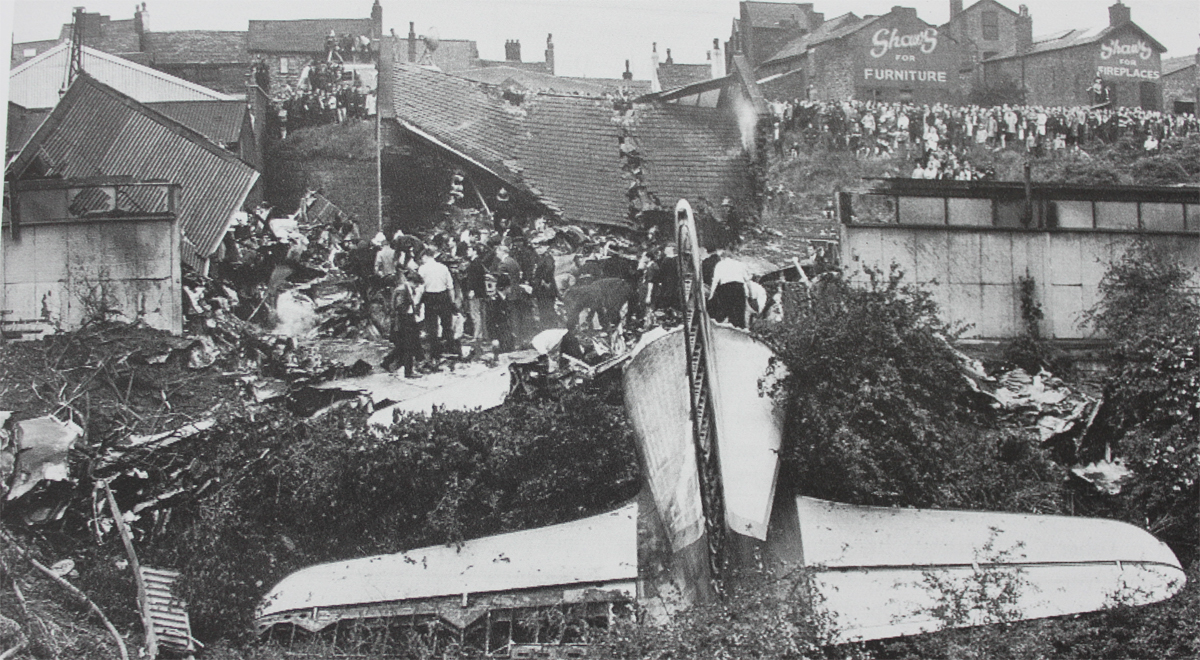
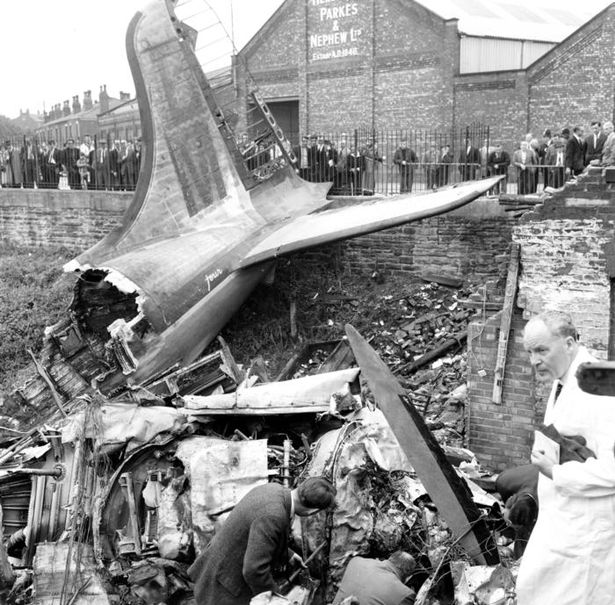
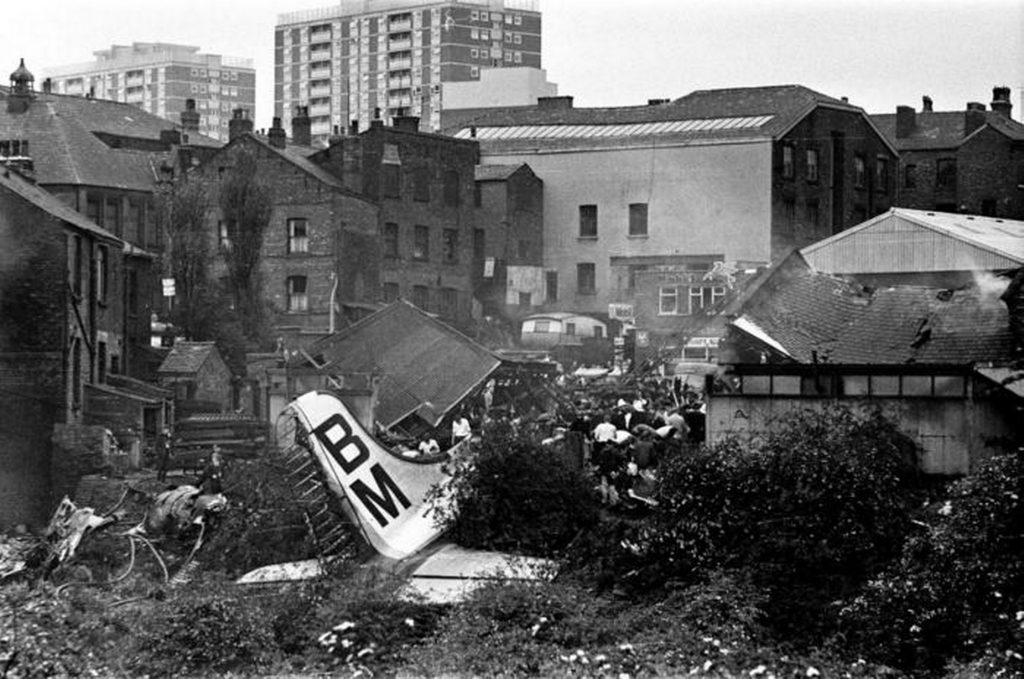
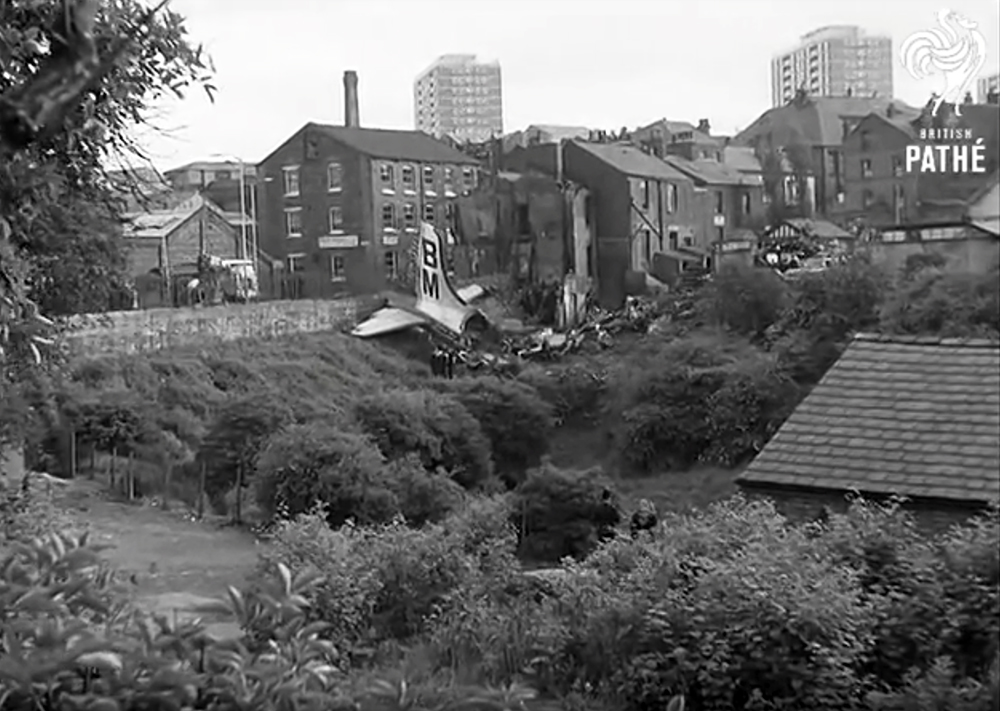
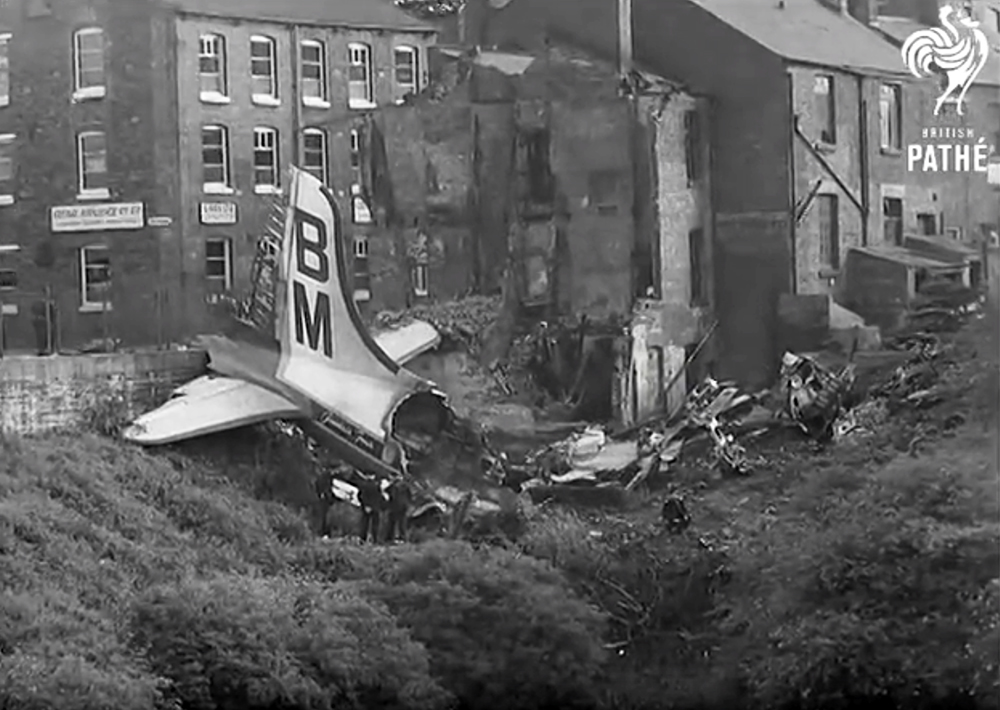
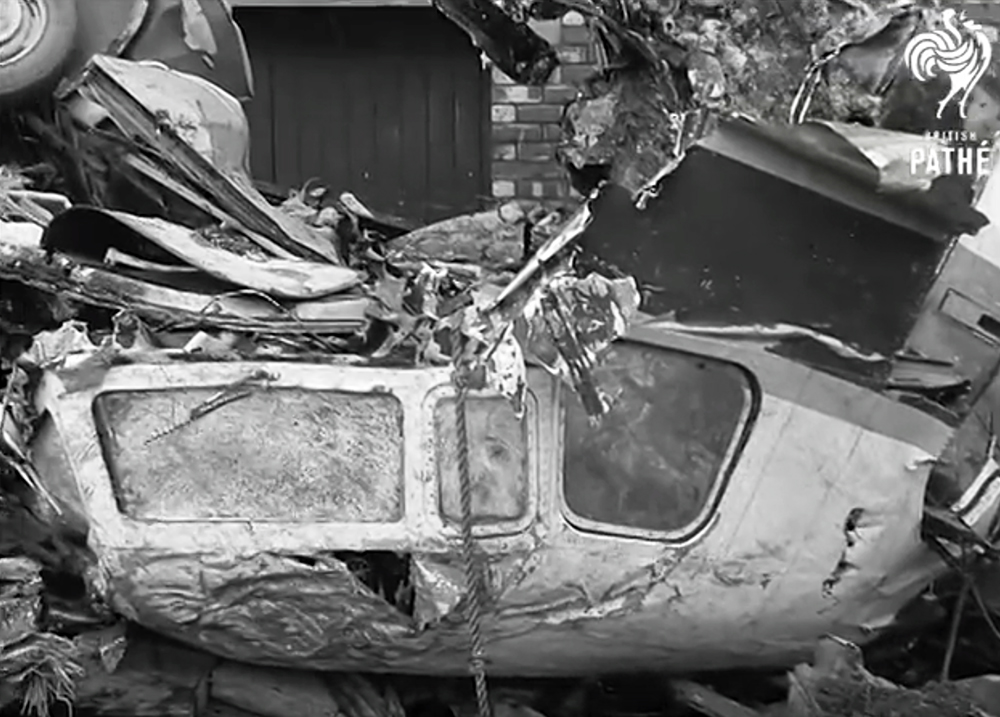
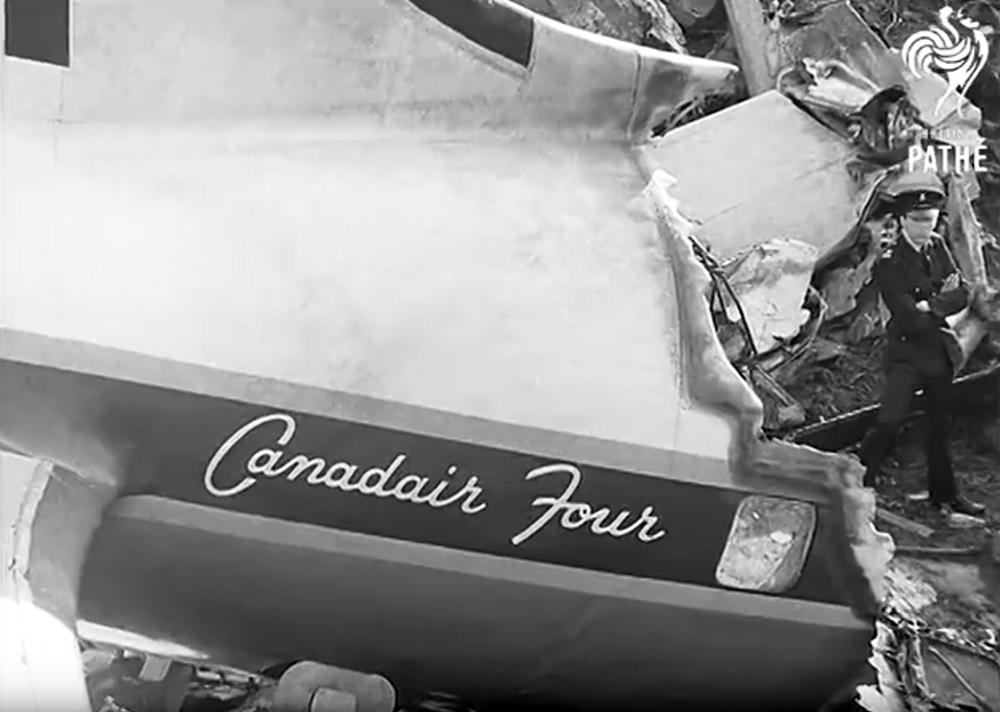
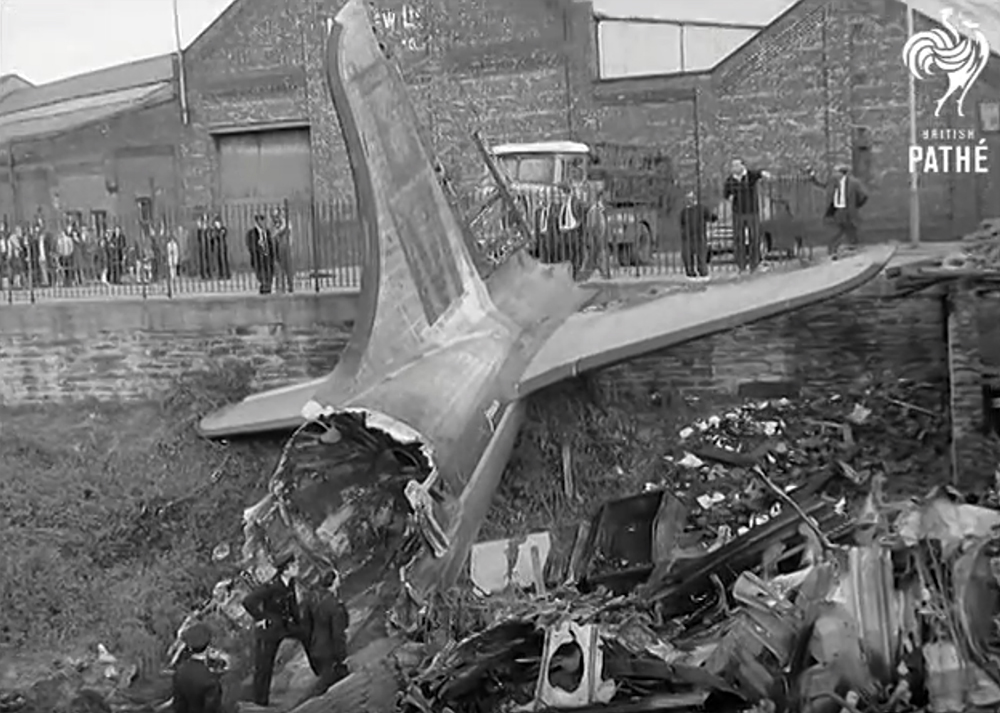
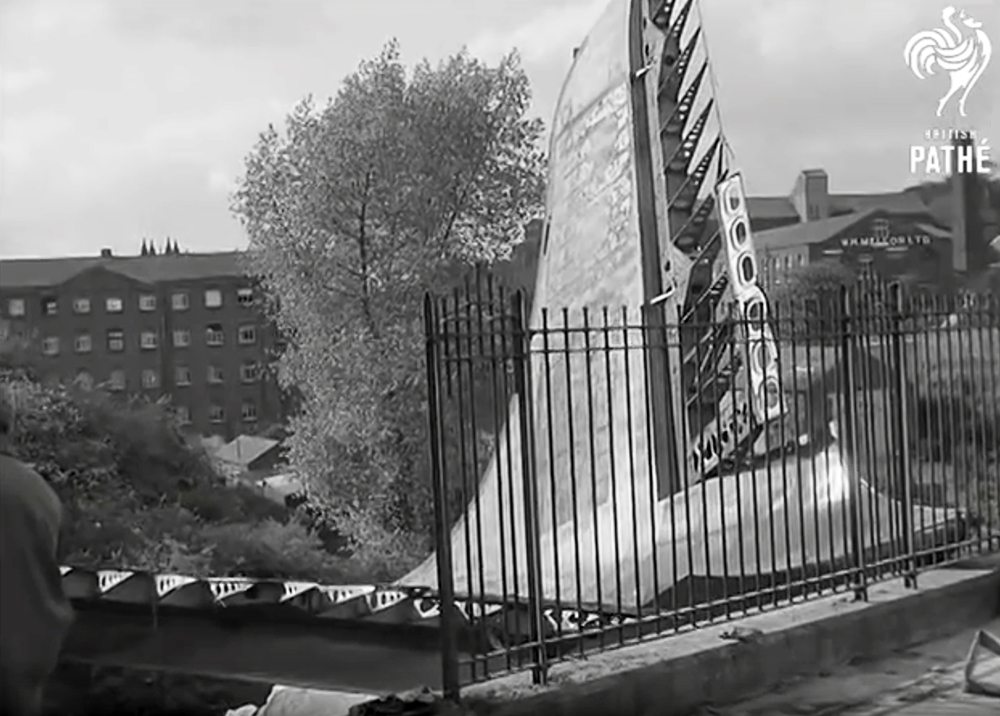
Crash of a Miles M.57 Aerovan IV in Manchester: 3 killed
Date & Time:
Apr 29, 1957
Registration:
G-AISF
Survivors:
No
MSN:
6396
YOM:
1946
Crew on board:
2
Crew fatalities:
Pax on board:
1
Pax fatalities:
Other fatalities:
Total fatalities:
3
Circumstances:
Crashed while taking off at Manchester-Ringway Airport. All three occupants were killed.
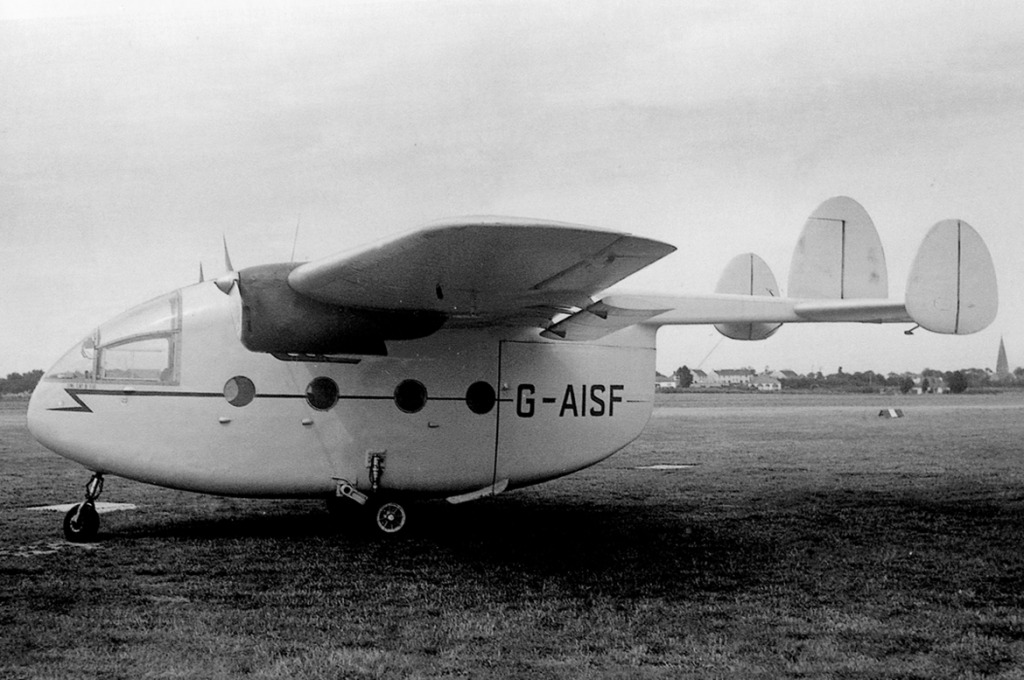
Crash of a Vickers 701 Viscount in Manchester: 22 killed
Date & Time:
Mar 14, 1957 at 1346 LT
Registration:
G-ALWE
Survivors:
No
Schedule:
Amsterdam – Manchester
MSN:
4
YOM:
1952
Flight number:
BE411
Crew on board:
5
Crew fatalities:
Pax on board:
15
Pax fatalities:
Other fatalities:
Total fatalities:
22
Captain / Total hours on type:
1051.00
Copilot / Total hours on type:
132
Aircraft flight hours:
6902
Aircraft flight cycles:
4553
Circumstances:
The aircraft was reaching the end of a scheduled passenger flight from Schiphol, Amsterdam, with a crew of 5 and 15 passengers aboard. Until the aircraft was roughly a mile from the threshold of the runway it was apparently making a perfectly normal approach, then it made a banked turn to starboard and continued to descend until the starboard wing tip struck the ground. With the starboard wing furrowing the earth and breaking up, the aircraft, obviously completely out of control, went on until it struck some houses, demolishing two of them (in one of which a woman and her infant son were killed). The aircraft came to rest in the ruins of the houses and immediately caught fire and set fire to the houses. All the crew members and passengers were killed in the accident. The position of the final crash was about 900 yards short of the runway and 200 yards to the right of its extended centre line.
Probable cause:
The cause of the accident was the fracture, due to fatigue, of the 9/16 inch bolt holding the bottom of the No. 2 starboard flap unit.
Final Report:


